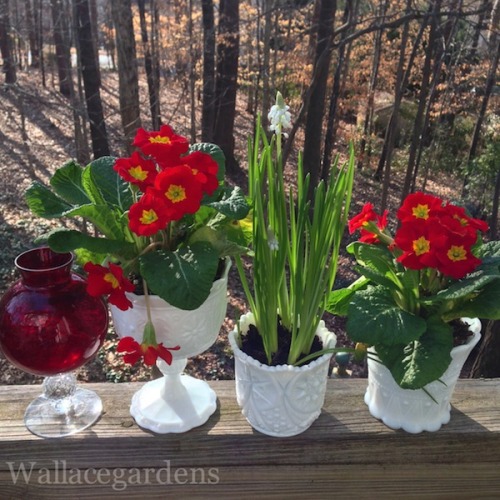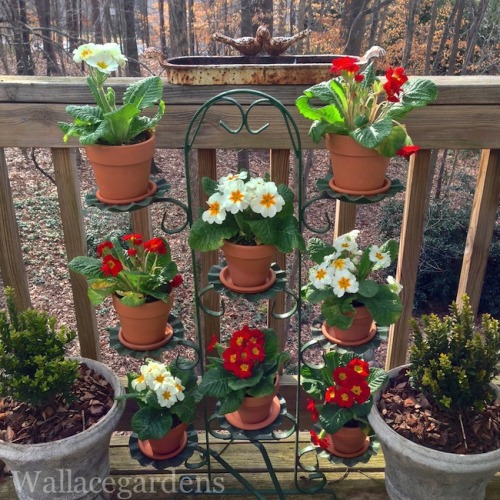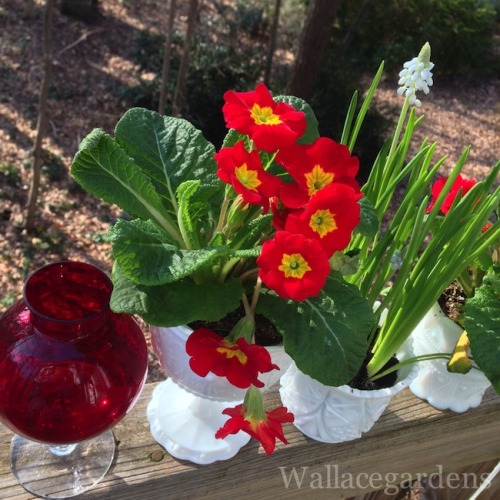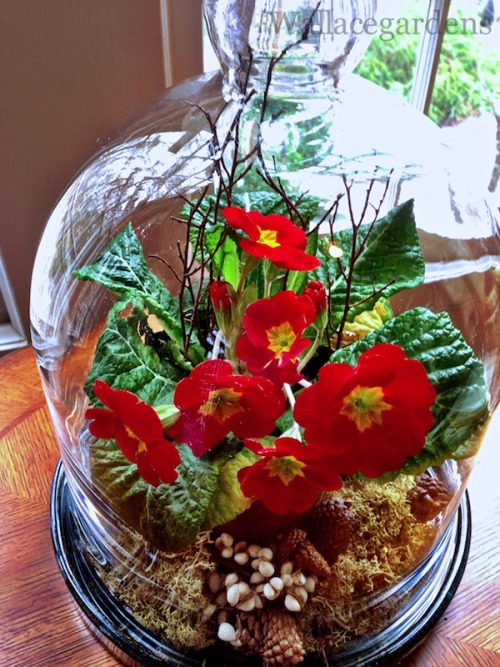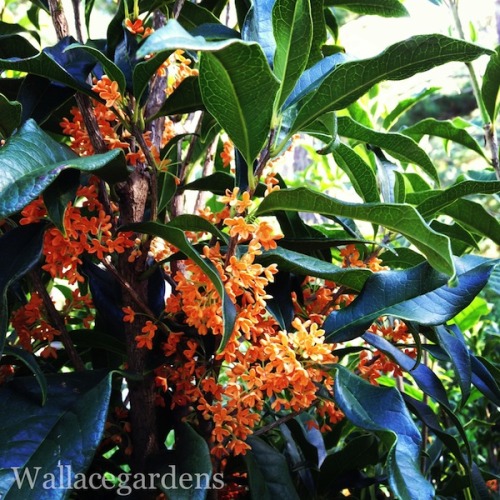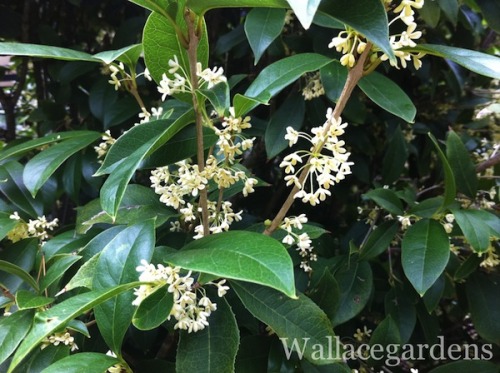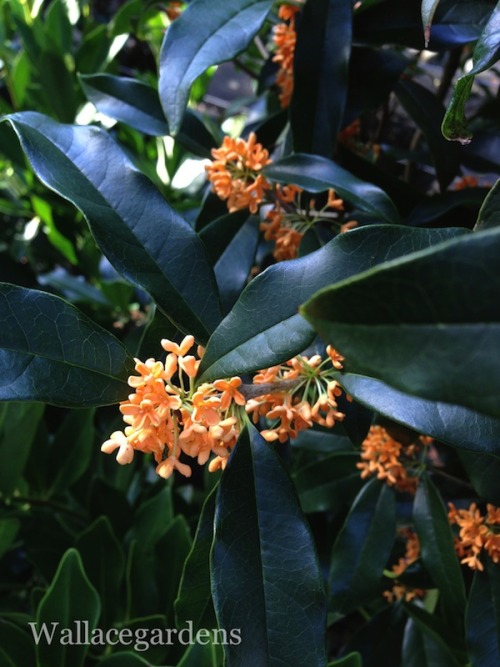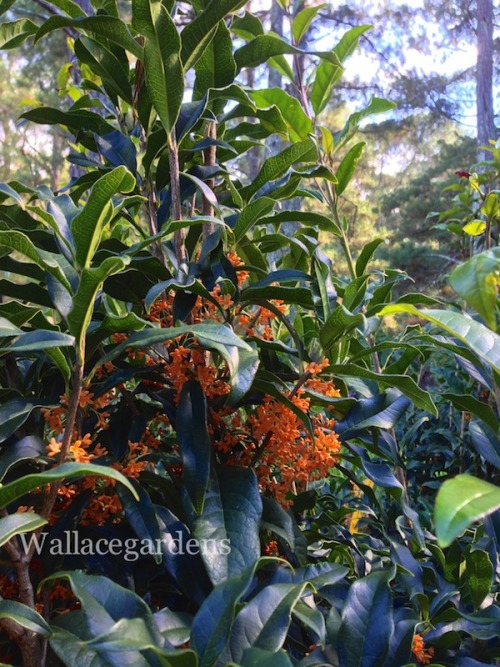#hortdork
An ice storm is on its way. This, after two polar vortexes in January and a two-inch snowfall that paralyzed Atlanta’s roadways for 24 hours. Thank goodness for primroses (Primula vulgarism) - just in time for an icy, snow-bitten Valentine’s Day.
It’s still too early for spring bulbs to appear from beneath the frozen tundra, so I brought home a few primroses from the local garden center to brighten an otherwise grim growing season. I dressed up an old vintage plant stand with terra cotta pots and filled them with primroses. Then I tucked a couple of plants into milk glass vessels that I keep on hand for various flower projects. The snow-white milk glass is such a pretty contrast to plant materials, and the primroses are no exception. For a tabletop centerpiece, I placed a pretty red primrose under a garden cloche for Valentine’s Day. What better way to spend the next two weeks, than under the influence of primroses?
Because primroses like cool temperatures and moist soil conditions, they are an easy flower to grow this time of year. The garden doesn’t offer a lot of color in February, so the first burst of spring usually comes in the form of primroses. As the garden starts to break out of winter, group primroses in planters with violets and pansies, all of which are edible flowers if you grow them organically (I use an organic cow manure tea from Authentic Haven Brand to keep my primroses blooming over a long period of time). Add organically-grown flower petals to salads, pasta dishes, or desserts for subtle, colorful flavors from the garden. Freeze the petals in ice cube trays for fruity beverages, or dry them to use in tea, but introduce them sparingly to guard against possible allergic reaction.
“Primrose” comes from Medieval Latin: prīma rosa, or “first rose.” They are my first flowers every spring.
Post link
It’s October, and if you’ve noticed something sweet in the air, it just might be this beautiful fall-blooming shrub: Osmanthus fragrans var. aurantiacus, the Tea Olive (or Sweet Olive).
The dense branches are massed with orange blossoms that have a citrus, peach-like fragrance, so place this near a deck or patio where it will be noticed. Tea Olives work well as a screen or hedge, and take to pruning well. With large dark green leaves, the Tea Olive will reach a height of 10-12 feet (and more) without pruning, depending on location. This particular variety is more cold hardy than the species, tolerating temperatures down to the single digits (Clemson Univ. Coop. Ext.). Tolerating a wide range of horticultural conditions, Tea Olives grow well in full sun to medium shade (with a slightly more open shape in shadier locations). Deer will not bother Tea Olives.
“Osmanthus” is from the Greek word osma, meaning “fragrant,” and anthos meaning flower. Tea Olives are natives of the Himalayas, China, and Japan. The flowers are used in Asian dishes, tea, and wine (Kew Royal Botanic Gardens).
Here in Georgia, the Sweet Olive was selected as a 2009 Georgia Gold Medal Plant selection. (The white blooming variety is the more common of the species, Osmanthus fragrans.)
Post link

